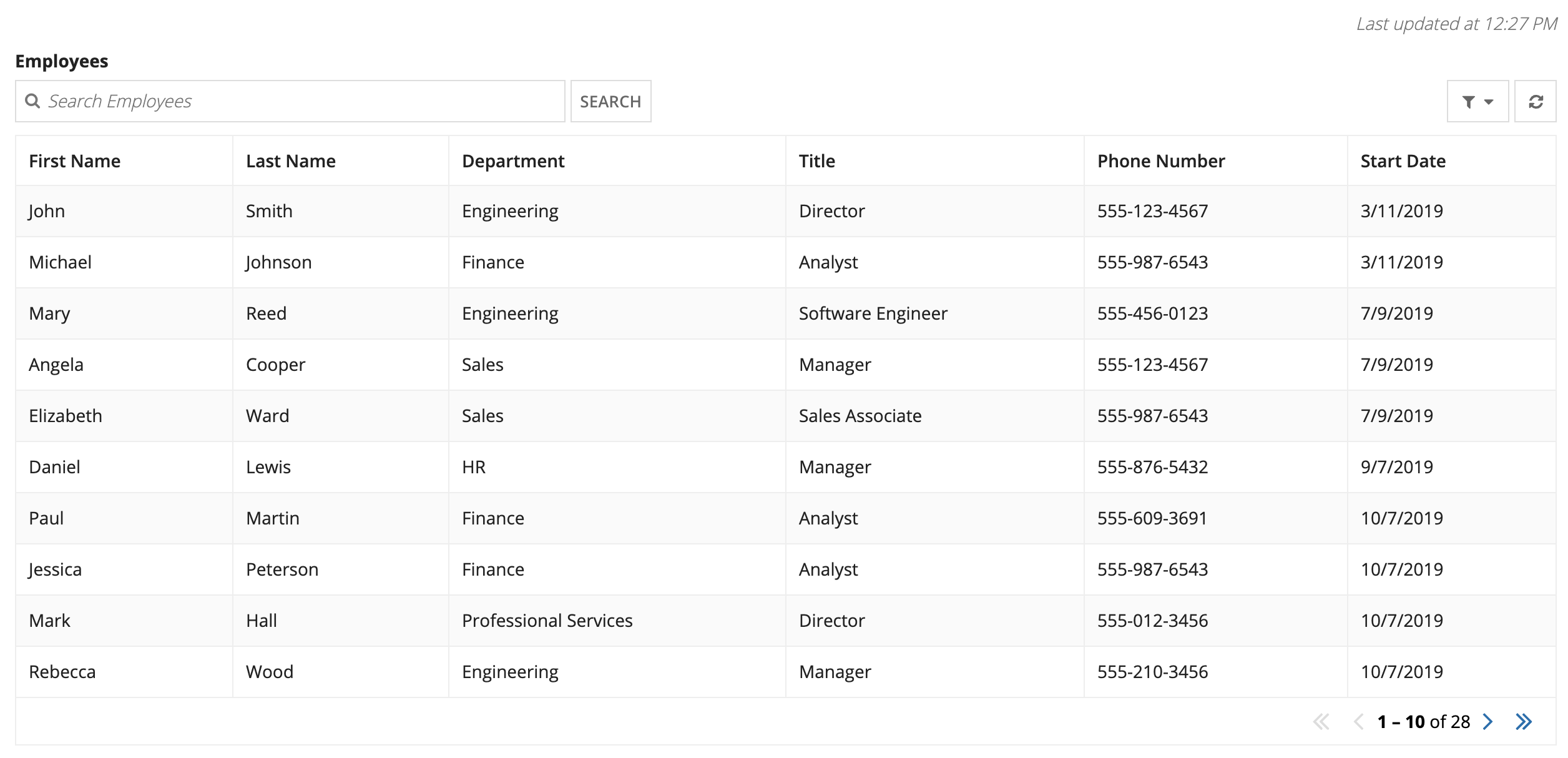
This scenario demonstrates how to enable, track, and display the last updated time when the data in the grid refreshed on an interval, and due to a user interaction. Use this pattern when you want to let users know how fresh the data is and when it was last refreshed.
ExpressionCopy link to clipboard
This pattern works by putting the recordData() function into a local variable, instead of directly into the grid, allowing the refresh variable in local!lastUpdatedAt to watch it. We use recordData() in order to take advantage of using record data in a grid which enables a refresh button. The fundamental pattern of watching another variable works just as well using a!queryEntity().
1
2
3
4
5
6
7
8
9
10
11
12
13
14
15
16
17
18
19
20
21
22
23
24
25
26
27
28
29
30
31
32
33
34
35
36
37
38
39
40
41
42
43
44
45
46
47
48
49
50
51
52
53
54
55
56
57
58
59
60
61
62
63
64
65
66
67
68
69
70
71
72
73
74
=a!localVariables(
/* This refresh variable refreshes every 30 seconds to return the data from
the Employee record type. */
local!employees: a!refreshVariable(
value: a!recordData(recordType!Employee),
refreshInterval: 0.5
),
/* This refresh variable returns the current time using the now() function.
It is set to refresh whenever local!employees changes. It's also set to
refresh every 30 seconds, because if local!employees refreshes, but the
data hasn't changed, then this refresh variable wouldn't know to
refresh. */
local!lastUpdatedAt: a!refreshVariable(
value: now(),
refreshOnVarChange: local!employees,
refreshInterval: 0.5
),
a!sectionLayout(
contents:{
a!richTextDisplayField(
labelposition: "COLLAPSED",
value: {
a!richTextItem(
text: {
"Last updated at ",
text(local!lastUpdatedAt, "h:mm a")
},
color: "SECONDARY",
style: "EMPHASIS"
)
},
align: "RIGHT"
),
a!gridField(
label: "Employees",
/* The recordData() function is external to the grid so it can be
referenced by the refresh variable in local!lastUpdatedAt. */
data: local!employees,
columns: {
a!gridColumn(
label: "First Name",
sortField: recordType!Employee.fields.firstName,
value: fv!row[recordType!Employee.fields.firstName]
),
a!gridColumn(
label: "Last Name",
sortField: recordType!Employee.fields.lastName,
value: fv!row[recordType!Employee.fields.lastName]
),
a!gridColumn(
label: "Department",
sortField: "department",
value: fv!row[recordType!Employee.fields.department]
),
a!gridColumn(
label: "Title",
sortField: recordType!Employee.fields.title,
value: fv!row[recordType!Employee.fields.title]
),
a!gridColumn(
label: "Phone Number",
value: fv!row[recordType!Employee.fields.phoneNumber]
),
a!gridColumn(
label: "Start Date",
sortField: recordType!Employee.fields.startDate,
value: fv!row[recordType!Employee.fields.startDate]
)
},
rowHeader: 1
)
}
)
)
Copy
Test it outCopy link to clipboard
- Wait for a minute or so to see the timestamp update automatically due to the timer, even if the data hasn't changed.
- To see the data refresh on change, make a change to the underlying data source then click the refresh button.
FeedbackCopy link to clipboard
Was this page helpful?
